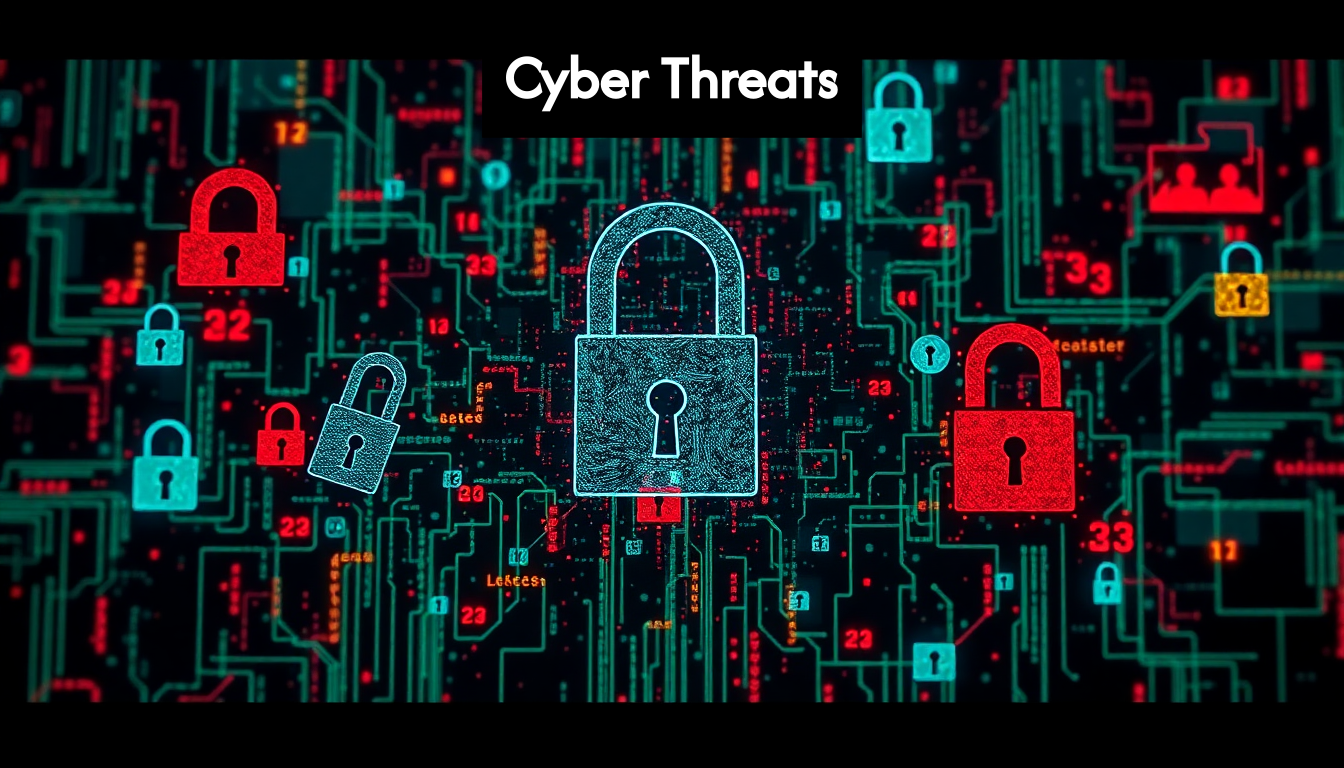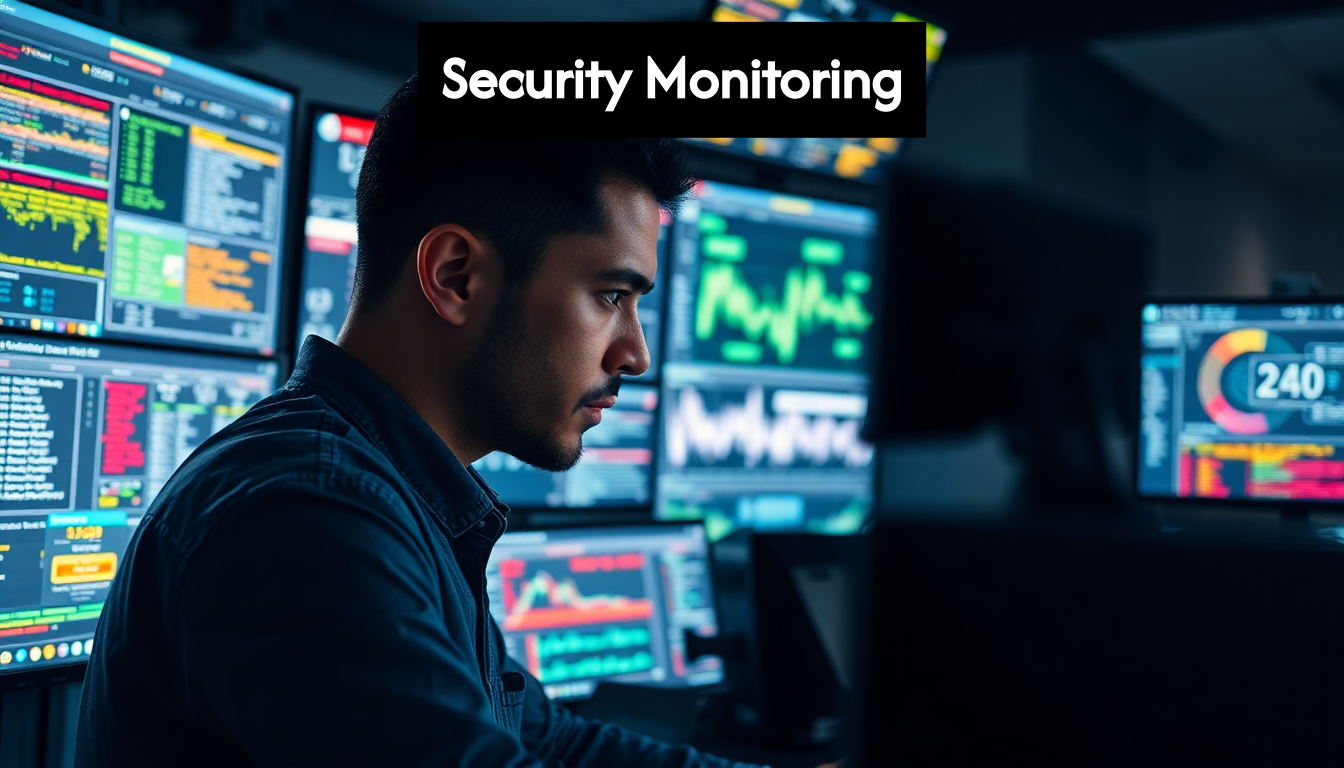
Network security challenges have taken a dramatic turn in recent years, making it vital for organisations to stay ahead of the curve. As digital infrastructure grows increasingly interconnected, the potential risks have skyrocketed. But here’s the kicker: addressing these issues often feels like trying to hit a moving target. Because while traditional security measures may seem adequate, they are far from enough in today’s digital landscape.
Identifying Key Network Security Challenges
Network security challenges have evolved dramatically in recent years, creating a complex landscape that organisations must navigate carefully. As digital infrastructure becomes increasingly interconnected, understanding the core security issues that threaten network integrity has never been more critical.
The Expanding Attack Surface
Modern networks face an unprecedented expansion of their attack surface. With the proliferation of cloud services, remote work arrangements, and Internet of Things (IoT) devices, traditional network boundaries have dissolved. This fundamental shift presents one of the most pressing network security challenges for today’s organisations.
The integration of new technologies like Software-Defined Networking (SDN) and virtualisation has further expanded potential vulnerabilities. Research indicates that simply increasing the speed of existing security mechanisms proves inadequate when facing these expanded attack surfaces. Each new connected device or service integration creates potential entry points for threat actors, requiring a comprehensive rethinking of security architectures.

Organisations must now secure an environment where data flows between on-premises systems, multiple cloud platforms, mobile devices, and IoT endpoints. This dispersed infrastructure makes consistent security policy enforcement exceedingly difficult and increases the likelihood of configuration errors that can be exploited.
Evolving Threat Landscape
The nature of threats targeting networks has grown more sophisticated and persistent. While traditional concerns like malware and unauthorised access remain relevant, today’s security teams must contend with advanced persistent threats (APTs), ransomware, and state-sponsored attacks.
These modern network security risks employ multistage attack strategies that can evade traditional detection methods. For instance, APTs might remain dormant in systems for months before executing their payload, making them particularly challenging to identify through conventional security monitoring.
Ransomware attacks have evolved from opportunistic to highly targeted operations, with threat actors conducting extensive reconnaissance before deploying encryption tools. These attacks specifically target backup systems and critical infrastructure, demonstrating a sophisticated understanding of organisational vulnerabilities.
Compliance and Regulatory Pressures
Regulatory requirements around data protection and privacy have intensified globally, adding another layer to network security problems. Frameworks like GDPR, HIPAA, and industry-specific regulations impose strict requirements on how data must be protected as it traverses networks.
Compliance isn’t merely about avoiding fines—it represents a baseline of security practices that organisations must implement. However, achieving compliance while maintaining operational efficiency creates significant challenges, particularly for organisations operating across multiple jurisdictions with varying requirements.
Skills Gap and Resource Constraints
The cybersecurity skills shortage remains a critical issue in network security. Many organisations struggle to recruit and retain qualified security professionals who understand both networking technologies and security principles.
This shortage is particularly problematic given the rapid evolution of threats and technologies. Security teams must continuously update their knowledge while maintaining existing defences, creating significant operational pressure. The skills gap often leads to security blind spots, as teams lack the expertise to properly configure and monitor advanced security tools.
Resource constraints extend beyond human capital to include budget limitations that prevent organisations from implementing comprehensive security measures. Many businesses face difficult decisions about where to allocate limited security resources, potentially leaving critical vulnerabilities unaddressed.
As network architectures continue to evolve and threat actors develop more sophisticated techniques, identifying and addressing these core network security challenges becomes essential for maintaining robust defences. The following sections will explore practical strategies for mitigating these risks in today’s complex digital environment.
Key Takeaways
| Takeaway | Explanation |
|---|---|
| Expand your security architecture | Modern networks require a layered security approach that integrates technical controls, operational processes, and governance frameworks to address evolving threats effectively. |
| Prioritise continuous vulnerability management | Shift from a mindset of complete vulnerability elimination to one of ongoing assessment and mitigation, focusing on vulnerabilities with the highest potential impact. |
| Embrace the Zero Trust model | Implement a Zero Trust architecture that requires continuous verification of all users and devices, reducing reliance on perimeter security in today’s interconnected digital landscape. |
| Enhance your monitoring capabilities | Develop a robust security operations capability that combines automated monitoring with human expertise to respond to threats effectively and maintain security posture. |
| Invest in training and awareness | Foster a strong security culture through regular training and awareness programmes to mitigate risks associated with human error and improve organisational resilience. |
Understanding Vulnerabilities in Your Network
Vulnerabilities within your network infrastructure represent potential entry points for malicious actors. Developing a nuanced understanding of these weaknesses forms the cornerstone of effective network security. This section explores how to identify, categorise, and prioritise vulnerabilities that could compromise your network integrity.
The Endless Nature of Vulnerabilities
A fundamental reality of network security is that vulnerabilities are not finite. While many organisations approach vulnerability management with the assumption that they can eventually discover and patch all weaknesses, this view is fundamentally flawed. Research suggests that the number of undiscovered vulnerabilities in software is essentially unlimited—a concept supported by computational theory which states that all non-trivial semantic properties of programming languages are undecidable.
This seemingly unlimited vulnerability landscape means that security teams must shift from a mindset of complete vulnerability elimination to one of continuous vulnerability management. Network security issues will always exist; the question becomes how effectively you identify and mitigate those with the highest potential impact.
The implications are significant: security strategies focusing solely on finding and eliminating all vulnerabilities are unrealistic and potentially wasteful of limited resources. A more pragmatic approach involves understanding your specific risk profile and prioritising accordingly.
Common Network Vulnerability Categories
Network vulnerabilities typically fall into several broad categories, each requiring different detection and mitigation approaches:
Configuration Vulnerabilities: Often the most prevalent network security risks, these stem from improper setup of network devices, default credentials, unnecessary open ports, or overly permissive access controls. These issues frequently arise from human error or oversight rather than technical limitations.
Software Vulnerabilities: These include unpatched systems, outdated firmware, or software with known security flaws. The rapid pace of vulnerability discovery means that delay in applying patches creates expanding security gaps.
Protocol Vulnerabilities: Weaknesses in the design or implementation of network protocols themselves can create security issues in networks. For instance, unencrypted protocols like FTP or older versions of HTTP transmit data in plaintext, creating opportunities for eavesdropping and man-in-the-middle attacks.
Authentication Weaknesses: Problems with how users and systems verify their identities represent significant security threats in network environments. Weak passwords, single-factor authentication, and flawed certificate validation all fall into this category.
Physical Infrastructure Vulnerabilities: Often overlooked, physical access to network components remains a critical security concern. Unsecured server rooms, accessible network ports, or unattended devices can all lead to network compromise.
Vulnerability Assessment Approaches
Identifying vulnerabilities across your network requires a multi-faceted approach. Effective vulnerability assessment typically combines several methodologies:
Automated Scanning: Vulnerability scanners can quickly identify known issues across large networks. These tools compare your network’s configuration against databases of known vulnerabilities, providing a baseline assessment of obvious security issues.
Manual Penetration Testing: Human-led security testing brings creativity and contextual understanding that automated tools lack. Penetration testers attempt to exploit vulnerabilities just as attackers would, revealing complex issues that might otherwise remain hidden.
Configuration Analysis: Regular audits of network device configurations against security benchmarks can identify deviations from security best practices before they’re exploited.
Traffic Analysis: Monitoring network traffic patterns can reveal anomalies that might indicate security problems, particularly those related to unusual data flows or unexpected connections.
Implementing a comprehensive vulnerability management programme requires combining these approaches with a clear understanding of your network architecture, business priorities, and threat landscape. The most effective strategies acknowledge that you cannot eliminate all vulnerabilities, focusing instead on reducing risk through prioritised remediation, enhanced monitoring, and resilient design.
By developing this nuanced understanding of network vulnerabilities, organisations can move beyond simplistic scanning regimes toward more mature security postures that align protection efforts with actual business risks.
Implementing Effective Security Measures
Implementing effective security measures requires a structured approach that addresses network security challenges at multiple levels. Beyond simply deploying a collection of security tools, organisations must develop a cohesive strategy that integrates technical controls with operational processes and governance frameworks.
Layered Security Architecture
The concept of defence in depth remains fundamental to addressing network security issues. This approach involves implementing multiple security controls across different layers of your network infrastructure, ensuring that a failure at one level doesn’t compromise the entire system.
At the perimeter, next-generation firewalls provide crucial filtering capabilities, blocking malicious traffic before it enters your network. These should be configured with strict rule sets that permit only necessary traffic while logging connection attempts for further analysis. Beyond traditional firewalls, implementing intrusion prevention systems (IPS) adds another critical layer that can identify and block attacks based on behavioural patterns.

Segmentation represents another vital component of layered security. By dividing your network into isolated zones with specific security requirements, you can contain breaches and limit lateral movement. This approach is particularly effective against the network security threat of an attacker who has already gained initial access.
Endpoint protection continues to evolve beyond traditional antivirus solutions. Modern endpoint detection and response (EDR) platforms provide comprehensive visibility into endpoint activity while offering advanced threat detection capabilities. These solutions help address the security issues in networks where traditional perimeter controls may be bypassed.
Secure Access Controls
Access management lies at the heart of preventing network security problems. Implementing the principle of least privilege ensures that users and systems have only the access rights necessary for their roles, minimising the potential damage from compromised accounts.
Strong authentication mechanisms are essential for verifying user identities. Multi-factor authentication (MFA) significantly reduces the risk of credential theft by requiring additional verification beyond passwords. For critical systems, consider implementing risk-based authentication that adjusts security requirements based on contextual factors such as location, device, and behaviour patterns.
Privileged access management deserves special attention, as administrative accounts represent high-value targets for attackers. Implement just-in-time access provisioning for privileged accounts, ensuring that elevated rights are granted only when needed and for limited durations. This approach helps mitigate issues with network security related to standing privileges that can be exploited.
Continuous Monitoring and Response
Implementing security controls is meaningless without the ability to monitor their effectiveness and respond to potential breaches. A well-designed security operations capability should combine automated monitoring with human expertise.
Security information and event management (SIEM) systems aggregate and correlate data from across your environment, providing centralised visibility into security events. These platforms can detect patterns that might indicate compromise, allowing for earlier intervention. Augmenting SIEM with user and entity behaviour analytics (UEBA) enhances your ability to identify anomalous activities that might signal an attack.
Incident response capabilities must be developed alongside monitoring solutions. This includes establishing clear procedures for investigating alerts, containing breaches, and remediating vulnerabilities. Regular tabletop exercises help security teams practice their response to various scenarios, improving their effectiveness during actual incidents.
Systematic Vulnerability Management
Addressing network security risks requires a systematic approach to vulnerability management. Research indicates that security should be integrated into every phase of development rather than treated as an afterthought. This proactive approach helps prevent security issues in networks before they manifest.
Establish a regular patching cadence for all network components, including infrastructure devices, operating systems, and applications. Critical vulnerabilities should trigger expedited patching processes, with clear service-level agreements for remediation timeframes based on severity.
Configuration management tools help ensure that security baselines are consistently applied across your environment. These tools can automatically detect and remediate drift from secure configurations, addressing network security challenges related to inconsistent settings.
Regular penetration testing provides valuable insights into the effectiveness of your security measures. By simulating real-world attacks, these assessments identify vulnerabilities that might be missed through automated scanning alone. The results should feed directly into your remediation processes, creating a continuous improvement cycle.
Security Awareness and Training
Even the most sophisticated technical controls can be undermined by human error. Developing a strong security culture through awareness and training programmes helps address network security challenges related to user behaviour.
Regular training sessions should cover both general security principles and specific threats relevant to your organisation. Consider conducting simulated phishing exercises to test user awareness and provide targeted training for those who fall victim to these tests.
By implementing these multi-layered security measures and continuously evaluating their effectiveness, organisations can significantly improve their resilience against network security threats. The key lies not in deploying individual controls but in creating an integrated security ecosystem where controls work together to provide comprehensive protection.
Future Trends in Network Security
As technology landscapes evolve at an accelerating pace, network security must adapt to address emerging threats and leverage new protective capabilities. Understanding future trends in network security helps organisations prepare strategically for coming challenges rather than merely reacting to them. This section explores key developments that will shape network security in the coming years.
Zero Trust Architecture
The zero trust security model continues to gain momentum as traditional network boundaries dissolve. This approach, based on the principle of “never trust, always verify,” represents a fundamental shift from perimeter-based security to continuous verification regardless of location or network.
Research indicates that zero trust architecture (ZTA) will become increasingly central to addressing modern network security challenges. Rather than assuming devices within a corporate perimeter are trustworthy, zero trust requires all users and devices to be authenticated, authorised, and continuously validated before granting access to applications and data.
This approach is particularly relevant as remote work becomes normalised and cloud adoption accelerates. By focusing on protecting resources rather than network segments, zero trust helps address network security issues associated with the disappearing perimeter.
Implementation will increasingly involve micro-segmentation, which divides networks into secure zones to maintain separate access for different parts of the network. This granular approach helps contain breaches and represents an evolution in addressing security issues in networks with diverse assets and requirements.
AI and Machine Learning Integration
Artificial intelligence and machine learning are transforming network security from reactive to predictive. These technologies enable security systems to identify patterns indicating potential threats before traditional breaches occur.
As network complexity and attack sophistication increase, human analysts struggle to process the volume of security data generated. AI-powered security tools can analyse massive datasets to detect anomalies that might indicate compromise, significantly enhancing threat detection capabilities.
Beyond detection, AI will increasingly enable automated response to certain classes of network security concerns. This includes dynamically adjusting security controls based on risk assessments, isolating potentially compromised systems, and prioritising alerts for human investigation.
However, this trend presents a double-edged sword. While defenders benefit from AI-enhanced capabilities, attackers are also leveraging these technologies to develop more sophisticated attacks. This arms race will likely accelerate, requiring organisations to continuously update their defence mechanisms.
Secure Access Service Edge (SASE)
The convergence of network and security functions into cloud-delivered services represents another significant trend. Secure Access Service Edge (SASE) combines wide area networking capabilities with security services like secure web gateways, cloud access security brokers, and zero trust network access.
This integrated approach helps address networking risks associated with distributed workforces and cloud applications. By delivering security capabilities from the cloud, SASE enables consistent protection regardless of user location or device.
The SASE model will continue evolving to provide more comprehensive security coverage while reducing complexity. This shift acknowledges that the traditional hub-and-spoke network model, with traffic routed through centralised data centres, no longer serves modern business needs.
Quantum Cryptography and Post-Quantum Security
As quantum computing advances, current cryptographic methods face unprecedented threats. Standard encryption algorithms that would take classical computers millennia to break could potentially be compromised by quantum computers in hours or minutes.
In response, post-quantum cryptography is emerging as a critical area of development. These new cryptographic algorithms aim to resist attacks from both classical and quantum computers, addressing one of the most significant future network security threats.
Quantum key distribution (QKD) represents another promising technology, using quantum mechanics principles to create theoretically unhackable communication channels. While currently limited by distance constraints and cost factors, ongoing research continues to make this technology more practical for widespread deployment.
Extended Detection and Response (XDR)
Security operations are evolving beyond siloed tools toward integrated platforms that provide comprehensive visibility. Extended Detection and Response (XDR) solutions unify data from multiple security products to enable better threat detection and automated response.
By correlating information across endpoints, networks, cloud workloads, and applications, XDR helps security teams identify sophisticated attacks that might otherwise evade detection. This holistic approach addresses network security problems related to fragmented visibility and disconnected security tools.
As attack chains become more complex, crossing multiple security domains, the ability to track threats across these boundaries becomes increasingly valuable. XDR platforms will continue evolving to provide more seamless integration and intelligence-driven analysis.
Preparing for these emerging trends requires organisations to develop flexible security architectures that can incorporate new technologies while maintaining fundamental security principles. By understanding these developments, security leaders can make informed decisions about where to invest limited resources for maximum impact on their network security posture.
Frequently Asked Questions
What are the key network security challenges currently facing organisations?
Network security challenges include an expanding attack surface due to cloud services and IoT devices, sophisticated evolving threats like ransomware and APTs, regulatory compliance pressures, and a significant skills gap in cybersecurity professionals.
How can organisations enhance their network security measures?
Organisations can enhance network security by adopting a layered security architecture, implementing strong access controls, and establishing continuous monitoring and response capabilities. Regular training and awareness programmes for employees are also vital.
What is the Zero Trust model in network security?
The Zero Trust model is an approach that requires continuous verification of users and devices, regardless of their location. It shifts the focus from perimeter-based security to protecting resources through strict access controls and mutual authentication.
Why is vulnerability management important in network security?
Vulnerability management is crucial because it helps organisations identify, categorise, and prioritise potential weaknesses within their network. A systematic approach to vulnerability management ensures that security measures are effectively implemented and maintained, reducing the risk of breaches.
Secure Your Future with Tailored Network Solutions
As network security challenges grow increasingly complex—think expanding attack surfaces and evolving threats—you might find your organisation struggling to keep pace. Whether you’re grappling with the demands of compliance regulations or facing the daunting skills gap in cybersecurity, now is the perfect moment to bolster your defences with proven strategies. How do you ensure your network is not just safe, but resilient?

At Re-Solution, we specialise in crafting tailored IT solutions that address your unique security needs. Our Managed IT Services, coupled with our Network as a Service (NaaS) offering, provide seamless connectivity while strengthening your security posture to adapt to modern threats. Don’t leave your network vulnerable. Engage with us today to explore how we can bolster your infrastructure—ensuring regulatory compliance, enhancing resilience, and reducing operational risks. Let’s partner together to navigate the digital landscape with confidence!
Visit us now at Re-Solution and make security a priority today!
